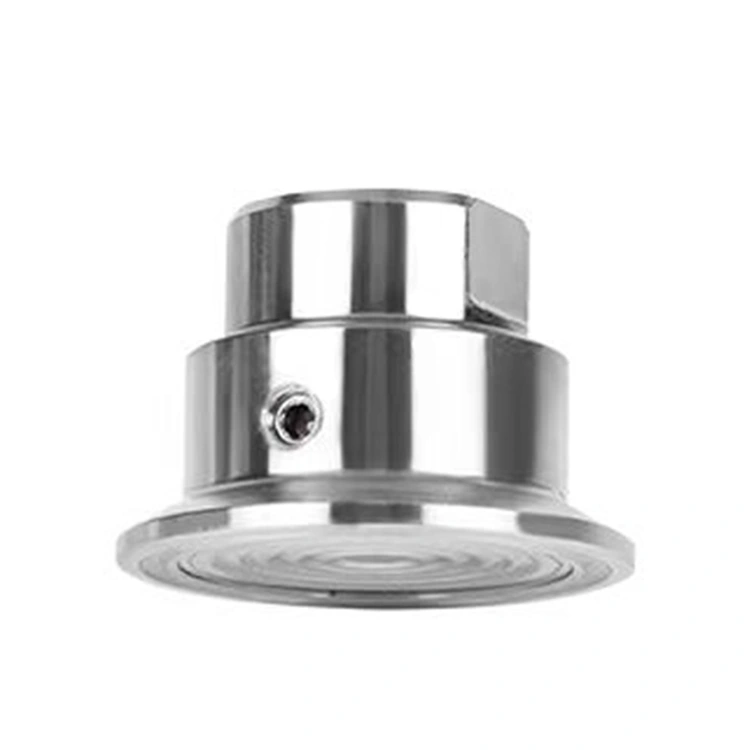What is a Diaphragm Seal with Sterile Connection and How Does It Work?
2025-01-10
In industries such as pharmaceuticals, food processing, and biotechnology, maintaining cleanliness and preventing contamination is paramount. Diaphragm seals with sterile connections are critical components in ensuring sterile, hygienic, and reliable process control, particularly in systems that need to be fully sealed from external contaminants. These seals are essential for preventing contamination of sensitive processes, such as those involving high-purity fluids or gases.
In this blog, we’ll explore the role of diaphragm seals with sterile connections, how they work, and their applications across various industries.
What is a Diaphragm Seal?
A diaphragm seal is a mechanical device designed to isolate the pressure measuring instrument (such as a pressure gauge or transmitter) from the process media. It uses a flexible diaphragm, typically made of stainless steel or other durable materials, to transfer the pressure of the process media to the sensor without direct contact. This helps to protect the sensor from harsh, corrosive, or high-temperature fluids.
When a sterile connection is added, it means the diaphragm seal is designed to meet stringent sanitary standards. This is particularly important in industries like pharmaceuticals and food processing, where contamination control is critical to product safety and quality.
How Does a Diaphragm Seal with Sterile Connection Work?
A diaphragm seal with a sterile connection works similarly to a regular diaphragm seal, with an added focus on maintaining a sanitary interface. Here's how it operates:
1. Diaphragm and Pressure Transfer: The diaphragm is placed between the process medium and the pressure measurement device. As the process medium exerts pressure on the diaphragm, it deforms slightly. This deformation is then transmitted to the pressure sensor, allowing for precise measurements without exposing the sensor to the process fluid.
2. Sterile Connection: The "sterile" feature refers to the design and materials used to ensure that the connection between the diaphragm seal and the process equipment is hygienic and free from contamination. Sterile connections typically involve materials that are resistant to bacterial growth, and the connection must be designed for easy cleaning (sanitization) to prevent the buildup of contaminants.
3. Preventing Contamination: The diaphragm seal is equipped with seals, gaskets, and sanitary fittings (like Tri-Clamp or SMS fittings) that are specifically engineered to prevent the ingress of bacteria, dirt, or other contaminants. These seals create a completely sealed environment for the process, ensuring that no process fluids or contaminants can come into contact with the pressure sensor.
4. Pressure Measurement: After the diaphragm deforms under pressure, it transmits this deformation to the connected pressure measurement device, which provides accurate, real-time data on the process pressure without exposing the sensitive instrument to potentially harmful substances.
Key Features of Diaphragm Seals with Sterile Connections
1. Sanitary Design
Diaphragm seals with sterile connections are designed to meet stringent hygiene standards. They are typically made from materials like 316L stainless steel, which is resistant to corrosion and easy to clean. The seals also use smooth surfaces and specialized geometries to prevent the accumulation of debris or contaminants.
2. FDA Compliance
In industries like pharmaceuticals and food processing, diaphragm seals often meet FDA (Food and Drug Administration) or EHEDG (European Hygienic Engineering & Design Group) standards to ensure they are safe for use in environments that require high levels of cleanliness.
3. Easy Cleaning and Sterilization
A significant advantage of diaphragm seals with sterile connections is their ease of cleaning. These devices are often designed for CIP (Clean-In-Place) and SIP (Sterilize-In-Place) procedures, meaning they can be sterilized without needing to be disassembled, which minimizes downtime and maximizes efficiency.
4. Accurate and Reliable Measurement
Diaphragm seals with sterile connections provide highly accurate pressure measurements, even in environments with challenging fluids such as viscous liquids, slurries, or gases. The diaphragm’s flexibility allows it to adapt to the characteristics of these fluids while maintaining precise measurements.
Applications of Diaphragm Seals with Sterile Connections
1. Pharmaceutical Industry
In pharmaceutical manufacturing, particularly for injectable drugs and vaccines, preventing contamination during production is crucial. Diaphragm seals with sterile connections are used to measure and control pressures in reactors, filtration systems, and sterile fluid transport systems.
2. Food and Beverage Industry
Food production processes require strict sanitation to prevent contamination and maintain product quality. Diaphragm seals are used to measure pressures in tanks, pipes, and sterilization equipment, ensuring that food production processes remain sanitary and efficient.
3. Biotechnology
In biotechnology, where sterile environments are necessary for the cultivation of cells or microorganisms, diaphragm seals with sterile connections are used in fermentation and cell culture systems. The seals help maintain the integrity of the environment while providing real-time data on process conditions.
4. Chemical Processing
In chemical manufacturing, diaphragm seals with sterile connections help measure and control pressures in reactors, distillation columns, and other critical systems. Their ability to withstand harsh chemicals while maintaining hygienic standards makes them ideal for this application.
Diaphragm seals with sterile connections are essential components in industries where cleanliness, safety, and precise control are critical. Whether in pharmaceuticals, food processing, biotechnology, or chemical manufacturing, these seals play a vital role in maintaining sanitary conditions and ensuring the accuracy of pressure measurements. Their hygienic design, easy cleaning capabilities, and reliable performance make them indispensable tools in maintaining the integrity of sensitive systems and processes.



